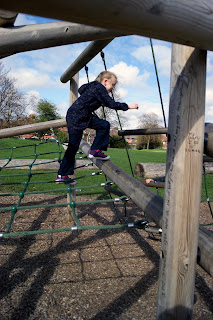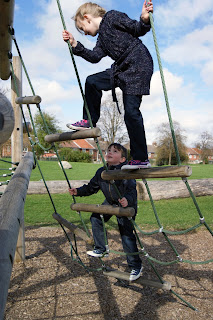We had a weekly task to do a family photo shoot on location, for mine I went to the park. The kids were very good to work with as they didn't really pose or look at the camera too much so it looks very natural. I shot on aperture value, on F 5 and ISO 400.

In this image I like how the wood create a slight frame around the top and right side of the image, this helps to draw your attention to the subject.

In this image I like how the kids (brother and sister) are looking at each other I think it shows the bond between them. However it's very tight at the top of the image and her head is a little bit too close to the top.

This is one of my favourite image from the shoot, to me this image just says childhood. However I think it may have been better if I'd been slightly lower down so looking up to give a sense of power.
I think this image has a bit of a comical feel to it, Oliver was holding on as much as he could so he didn't fall.

I edited this image in to black and white and I like how it turned out.

I also edited this one into black and white, however I think that in the colour image Oliver stands out more. Whereas in this image the back of his coat blends into the background because of the sun.
Here is the colour image, I tried to use 'back lighting'. This is a technique that is used in natural light, where the photographer faces the sun and the subject has his/her back facing the sun. In doing this you would create a 'glow' around the subjects head and/or body, it also stops the model from shutting there eyes (they would do so if facing the sun). As you can see in my image the sun is coming from the side of Oliver and he slightly looks like he's trying to shut his eyes. This will be something I'll have to keep in mind for my next shoot.
Here are some image that I found that I used for a bit of inspiration.

Here in this image, the boy is backlit and its narrow depth of field as the tress aren't in focus. This helps keep our eyes on the boy
.































